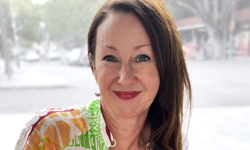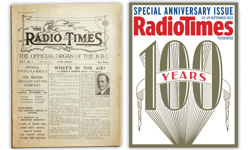Sean O’Driscoll, MD of David Hall Publishing (DHP), may spend the best part of every working day thinking about sport fishing, shooting and country pursuits, but you won’t catch him boasting about the size of the one that got away.
He cheerfully admits he once caught a ten-pound salmon, but that’s as good as it ever got. He doesn’t even fish these days.
His focus, however, is very much on those who do. The fact that they spend an estimated £500m every year on their passion in the UK alone, gives O’Driscoll great cause for optimism.
Even so, being at the helm of an independent publishing house in this large market, a market that has been dominated for many years by the giant German media group, Bauer, also requires a real appetite for transformative challenges, ones that O’Driscoll admits are about the very survival of the company he leads.
“Like many people in this industry, I sometimes wake up and think what an exciting time it is to be a publisher; other days I think I’m having a nightmare!”
Dealing with print decline
That print is in decline is a given, he says; the only question that matters is how the vast fall in revenue that results can be migrated to revenue from digital products. Where once revenue streams were simple, now they are myriad. Constantly creating new streams is where the battle for viability is being fought.
DHP has a turnover of £3.8m a year, of which £1.9m comes from advertising; this is in the context of a UK angling publishing market worth just over £7m and a shooting publications market worth another £4.6m.
And, while creative ways are constantly being examined to maximise income, there is little doubt the trajectory of revenue from advertisers is downwards. Declining overall print sales is only one reason. The second big factor is that major advertisers are now becoming rival content producers.
“We’re in a very specialised market place,” says O’Driscoll. “A lot of our corporate advertisers are becoming our competitors; they now employ their own media managers and film crews.”
DHP’s prize assets
Of course, none of these resources mean a credible content-producing brand can be created overnight, and O’Driscoll believes this is the DHP advantage. Ultimately, then, independence and credibility is what DHP seeks to leverage. This pertains whatever the activity, whether it’s providing PDF versions of its publications, website content, video magazines, YouTube channels or even Carp In The Park – a rock music plus rock-salmon event, a kind of Glastonbury for fishing enthusiasts.
As advertisers recede, however, the long-term challenge, O’Driscoll believes, is to migrate around £900,000 of the company’s current £1.9m of advertising revenue over to subscriptions or paid-for content.
There is an irony about the strategy DHP now deploys – that is to slice the way content is delivered as many times as possible and to create niche markets. The irony lies in the fact that the company’s eponymous founder, David Hall, who died in 2013, had no love for digital content and online delivery. “He even banned the word ‘app’,” says O’Driscoll.
And yet it was Hall who spotted, three decades ago, what everyone now knows as the long tail: he divided the angling publishing market into even more tightly focused areas.
Hall, a council-house lad from Manchester, who went into publishing because he didn’t have any O levels and so couldn’t get a job in journalism, realised that specialisation was the secret to creating new markets.
“Fishing is a lot like rugby,” he reflected in a 2010 interview. “If you’re not a fan, union and league are much the same. But rugby fans know they’re completely different.”
In the 1970s, there was only one black-and-white, 48-page fishing magazine. “It was trying to cover everything and failing,” Hall said. So he launched Course Fishing. Hall said he was told by an angler friend that he would never make it work, because coarse fishermen don’t read. It turned out this was simply because there was nothing for them to read.
In ten years, Hall built the magazine’s circulation up to 19,000. But then its distributor went bust and the magazine was dragged down too. Hall decided it was safest to manage the whole publishing process himself, hence the birth of David Hall Publishing.
The company now produces ten angling and shooting magazines from its Daventry base: seven consumer titles and three for the trade, two of which sell globally.
“Going back ten years,” says O’Driscoll, “there were really just three major sources of revenue: magazine sales through the high street, subscription magazine sales and advertising sales.” Now the company manages a total of 25 individual income streams.
“David had great vision, but he wasn’t someone who understood the realm of the internet and nor did he want to,” says O’Driscoll. The result was that the company was a slow-mover into the digital world.
Multi-media approach
Things have changed radically in the last three years, as a multi-media approach now pervades the company as it looks to monetise content to the maximum. O’Driscoll admits the challenge of where to go next is constant. “You listen to the big boys, the bigger publishers and they can invest £100,000 or £200,000 on new ventures, and if they go wrong, they just move on – well, we can’t afford to do that. There’s a massive amount of trial and error; but the one good thing about digital is that it’s cheap to try – you try something, if it works, great; if not, you move on.”
A significant advantage for a publisher in this sector is that anglers want to learn from each other, and especially from experts; this is not only because fishing and shooting are great passions for many, but there is also big money at stake for the most accomplished: winners of fishing competitions can walk away with £25,000, even £50,000.
This appetite helped the company find a ready audience eighteen months ago when it launched four video-magazine products, which are a hybrid of text and video. These have proved highly successful; in fact, O’Driscoll describes them as the company’s saviour, and says they earned over £100,000 last year, a significant sum relative to turnover.
“What we’ve done with the video magazines is taken the match fishing sector and dissected it, so we now might take, say, feeder fishing and take a prominent angler and do material with him.”
These magazines are a mix of 52 pages of PDF text and a video. There’s never any more than 3,000 words and plenty of photos. “You can read them in fifteen minutes,” says O’Driscoll. “So you get your text fix and then watch the video. The readership has really bought into this concept and many people are buying all four each month.” The video magazines sell at £2.99 each or for less in blocks of six or twelve. And, naturally enough, as soon as the company had produced six months’ worth of the videos, it packaged them into a DVD box set aimed at the Christmas market.
Growth potential
There is a still a large, untapped angling and shooting audience out there, O’Driscoll believes, but he doubts the oft-touted claim there are four million anglers in the UK. “If you add up all the magazine sales, even in the good times, you’d be lucky to get 500,000,” he points out.
Even so, DHP’s combined Facebook following across all titles has reached 250,000. O’Driscoll says his target is to be talking to an audience of a million. “Each of our Facebook pages now has more followers than we sell print magazines, which is OK, and it’s all right all these people following you and liking you, but I want to figure out how to sell something to all of them.”
One area in which DHP has seen what O’Driscoll describes as “massive revenue growth” is with affiliates, which work through product reviews, both on DHP’s sites and the affiliate’s site. Over £500,000 of sales were generated for one retailer last year; this, in a market in which the average fishing tackle shop has a turnover of just £200,000, is a significant sum. “We’re publishers, but we’ve also become facilitators for retailers,” says O’Driscoll.
The company’s latest project is a YouTube channel, Match Fishing TV, which is updated with a new hour-long show each Monday evening. Described as a little like the BBC’s Football Focus, it offers news from the world of competition fishing and previews upcoming events. Viewing figures mount the longer episodes have been posted, with some of the early shows now racking up over 11,000 views.
Currently, it’s a free offering; and is all about building a sizeable audience and brand building. “Where it’s not possible to gain revenue from the end user, then we look to build audiences and bring in advertising. So that’s where we’re probably going with the TV channel,” says O’Driscoll.
He is acutely aware of the huge quantities of free how-to content available online; nevertheless, he believes DHP’s offerings prove that quality material, carefully curated and well presented can find either an audience to attract advertisers or enough subscribers to be viable.
As the company continues to diversify – now even including an online shopping portal, tacklehouse.com, which offers an outlet for smaller retailers – O’Driscoll stresses the importance of maintaining the core brands. “We certainly have no desire to become a full-blown retailer selling fishing tackle,” he says.
Ultimately, the magazine titles that still form the backbone of the company will endure, O’Driscoll believes, although much of their content may be served up differently.
What we do has to remain all about fishing and shooting, he says. And, in terms of content, the company’s motto continues to be that it employs anglers and shooters who can write, not writers who fish or shoot a bit.
“We’re not ABCd, because we don’t have the numbers,” O’Driscoll says. Even so, the company claims to have the two leading carp fishing magazines in the country – Total Carp and Advanced Carp Fishing, with monthly sales, says DHP, of 16,002 and 8,171 respectively.
“We’re not strong enough to ABC,” O’Driscoll says. “Instead, we continue to build up our business on relationships. If we can help advertisers, we know we’ll get a return somewhere down the line, maybe five or six months later, but we will get a return.
“So, for me, it’s a case of getting stronger in the marketplace by creating leadership and influencing people. We’ve never been dominant in this marketplace,” O’Driscoll adds, “but that’s where we now want to get to.”
Launched: 1985
Managing director: Sean O’Driscoll
Publications include: Match Fishing, Total Carp, Pole Fishing, Tackle & Guns
Most recent product launch: Match Fishing TV
Turnover: £3.8m
Employees: 53 (+ 6 freelance)
Website:www.davidhallpublishing.com












